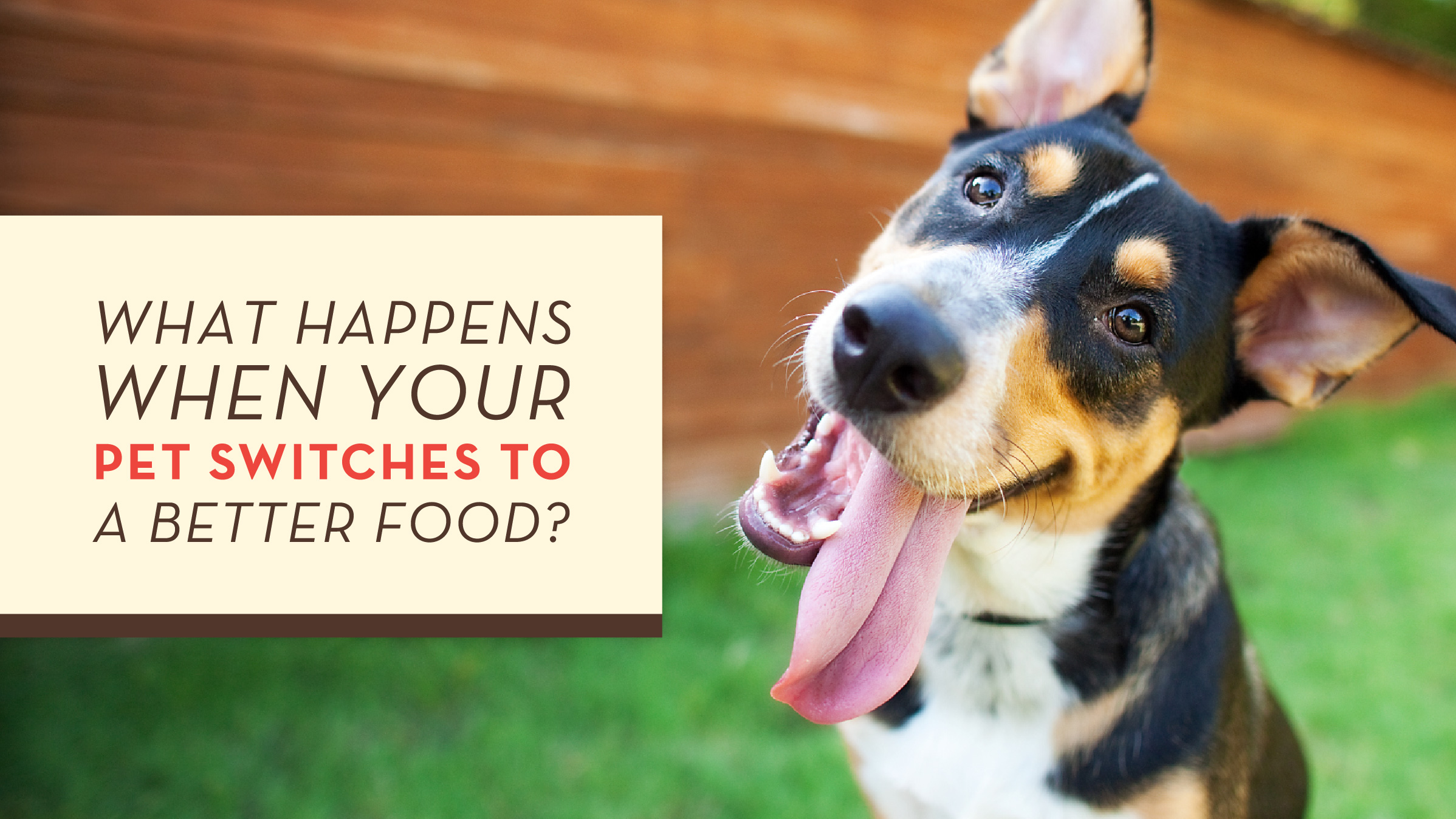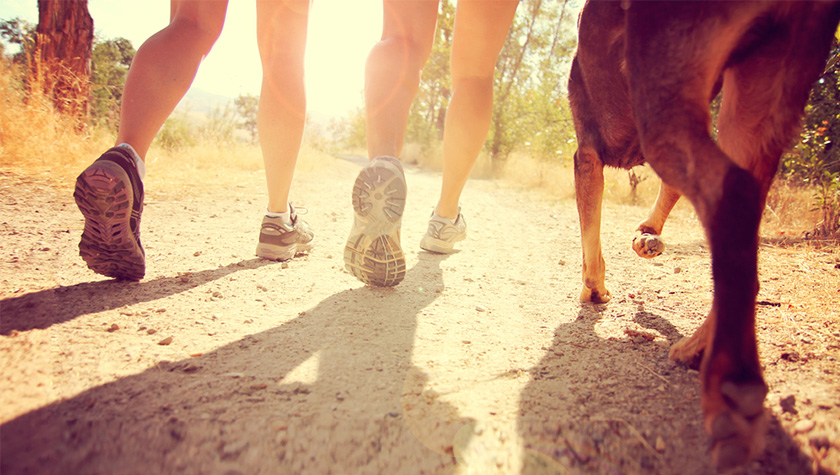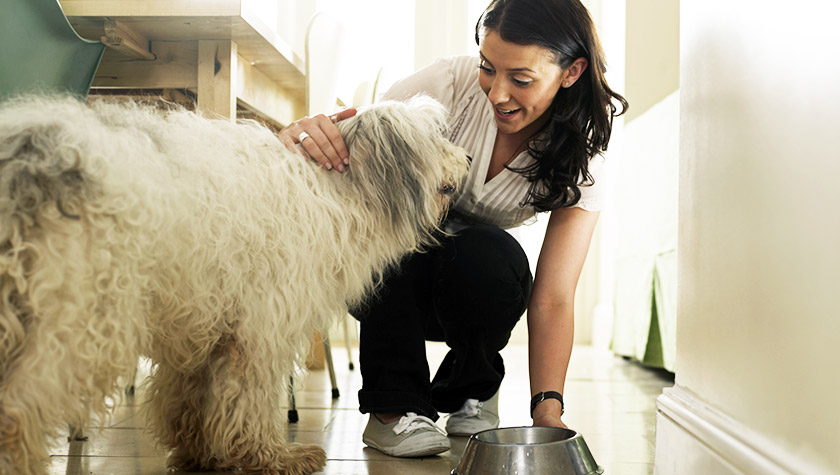Thinking about changing your dog’s food? Changing your dog’s food can seem like an intimidating undertaking – how, why and when should I switch? More importantly, what will happen to my pet? Be sure to first consult your veterinarian about the best food for your pet and how to properly switch to dog food.
If you decide to switch dog food, remember that changing a dog’s diet can sometimes be a rough transition process. The time it can take to adjust to a new dog food can vary depending on the dog, the dog food, and the contents of the current food compared to the new dog food.
It is normal to not notice any immediate positive changes as you transition your dog to a new food. However, in the long run, your dog’s health will likely gradually improve as better nutrition and a more complete and balanced diet contribute to their health.
During the adjustment period, it isn’t uncommon for your dog’s reaction to the new dog food to be a little off balance. As with humans, changing food and a new diet is a transition. The new dog food transition period may come with stomach issues including upset stomach, gastrointestinal upset, or a change in stool color.
Your dog may also experience decreased appetite as they’re weaned off eating the old food and develop a taste for the new pet food.
Don’t let a sometimes rough transition period stop you from changing dog food. A dog’s diet is a very important part of their lifestyle and if you want to keep your dog happy and healthy, it might be worth it to complete the pet food transition even if the new diet is initially a little rough on their sensitive tummies. The transitioning process helps to ease this change. How? We’ll go over the subject in more detail below.
Potential Benefits of a New Food
Skin & Coat
Unlike other health matters, the condition of your dog’s skin and coat is something that can be seen with the naked eye. When dogs adapt to a new food with better nutrition, the transition to more healthy skin and coat is a great sign that the new food the dog is eating is working.
With the old food, you may notice when your dog’s skin is red and dry, or their coat is dull and patchy – which many times leads to uncomfortable itchiness.
Many pet food allergies affect the skin and coat, so switching to a food that contains Omega-3’s and Omega-6 fatty acids can be beneficial. In about 6 weeks’ time, you should notice a gradual improvement in the smoothness of their skin, as the fatty acids will add luster to their coat.
Vet Tip: Brush your pet regularly to strip dead fur and distribute natural oils through the healthy fur.
Digestive System
Healthy digestion is a critical, and sensitive, component of switching food. If your pup’s current food makes their stomach upset or they suffer from chronic flatulence or loose stool, then a diet change, either to a new food or to a new food brand, may be beneficial.
After discussing with your veterinarian about the best method of transitioning your dog to a new food (a “cold turkey” switch is not recommended), you should notice firmer, consistent stool and reduced gas. It’s important to note that different amounts of fiber and protein in the new food may alter the appearance of your dog’s stool.
Your dog’s “number twos” can be a great indicator of digestive health. And digestive health is tied closely with overall health. So when you’re making the switch to a new dog food, keep an eye on their stool to ensure that the change is going well.
Dog stool isn’t exactly the most tantalizing subject to think about, but it’s something to keep a close eye on, especially when a food change has been made.
Vet Tip: Most experts recommend transitioning to a new food gradually over a period of 7-10 days. It’s a slow and steady process, but one that will decrease the chances of vomiting, constipation or diarrhea.
Behavior
When many people think about dogs, they think about happy, energetic creatures who love to run around and play with us and with other dogs. This doesn’t just go for dogs of course. People are the same way.
When we eat healthier, we have more energy – the same goes for our four-legged friends. Your dog’s food is a critical element in this regard and when you change your dog’s food it can impact their energy levels.
There are other factors at work besides dog food, of course. Old age, a recent illness, or a stressful event can cause lethargy. A dog can also suffer from stress that can affect its health. Giving your dog the right food can go a long way in remedying this.
That being said, dog foods are not created equal. Switching to a new food with increased levels of antioxidants can vitalize your pet. Antioxidant-rich diets not only boost your pet’s immune system, but his mood, too. After switching your pet’s diet, you may notice surges of energy, or a restored sense of vigor. A pet with more energy means a pet with more strength, plus increased longevity and happiness.
Vet Tip: With increased energy levels come the need for increased activity. Invest in a new toy for your pet and devote time to play daily!
Switching to a new food can be extremely advantageous for our pets, if it’s carefully thought through and customized to your pet’s health conditions.
Different dog food brands often have many of the same ingredients but some have more artificial ingredients than others and switching to a new dog food with more natural ingredients can throw them off for a bit.
Don’t hesitate to change your dog’s food but remember, if at any point your pet develops symptoms such as a loss of appetite, vomiting, loose stools, or other gastrointestinal issues, consult your veterinarian.
Don’t be alarmed if this happens. When a dog has been eating the same food for a while their system gets used to it. Switching to a new food, even when the new food is better, can be a bit of a shock to the system. Your vet can help with this if it turns out to be the case. In the unlikely event that something more worrying is happening then your vet can provide advice.
Common questions about transitioning your dog’s food
How long does it take a dog to adjust to new food?
When you change your dog’s food, your dog might have diarrhea, nausea, or a decrease in appetite. The slow transition of food allows the dog’s gastrointestinal system to adjust. Plan to take two to three weeks for the conversion from the old food to the new.
What happens when you switch dog food too fast?
The sudden changes you make to your dog’s diet can lead to gastrointestinal problems, like an upset stomach, nausea, and diarrhea.
Your dog’s stomach needs time to adjust to the new diet, even if the new food is better than the old food. Many dogs with sensitive stomachs may need a bit more time to adjust to the new pet food.
Take stock of your dog’s stomach and digestive condition after approximately one week. If the dog’s switch to a new food from an old food is going well with minimal digestive problems, then things are probably going well.
Most dogs won’t have an issue changing to a new food, but if your dog seems to be having a hard time, consult a vet.
In some cases, dogs are used to the food they were eating and may have a taste for it, so transitioning to a new food may be an unwelcome change for them. This is another reason for a gradual transition.
How long does it take a dog to fully adjust to new food?
When changing your dog’s diet, they might have diarrhea, nausea, or a decrease in appetite. The slow transition of food allows the dog’s gastrointestinal tack to adjust.
Keep your dog hydrated and keep them active while they eat their new food. Plan to take two to three weeks for the conversion to different foods.
Can puppies and adult dogs transition to a new food?
In general, dog foods for puppies and adult dogs can be switched without any major concerns. That said, it’s usually best to consult your vet before making any food changes, especially since food for puppies is meant to help them gain weight.
If your dog is having healthy problems or just doesn’t have the energy it should, then changing the foods they’re eating can give your dog the shakeup they need for a healthier and happier life.





